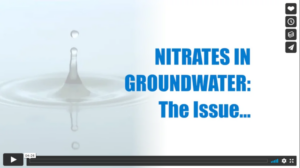Salinity & Nitrate Control Program
Salinity is a silent threat to the Central Valley water supply and to the environment. Salts can collect and concentrate in our underground water supply, making the water unsuitable for human consumption or agricultural use. If not properly addressed, salinity will impact our future groundwater resources, resulting in the requirement of costly treatment processes before groundwater can be used for human, agricultural, or industrial consumption.
Solutions for this issue in the Central Valley depend on the development and implementation of effective regional land use and water supply policies. It is also imperative that customers use less salts, and choose the salts we do use wisely, to protect the environment and Central Valley water supply for years to come.
About Salinity
About Salinity
What is Salinity?
Salinity is the presence of inorganic ions or compounds dissolved in water or soil. The most common ions in water are sodium, chloride, calcium, magnesium, carbonate, bicarbonate, sulfate and nitrate, which we commonly refers as salts.
Why is salinity a challenge?
Salinity is a silent threat of enormous proportions. Historically, salt has led to the fall of civilizations. If not properly addressed, salinity will impact our future water resources, resulting in the requirement of costly treatment processes before water can be used for human, agricultural or industrial consumption. Solutions for this issue in the Central Valley depend on the development and implementation of effective land use and water supply policies. Raising awareness of this issue and researching solutions is a must.
How do we measure salts?
An easy way to determine the amount of salts in water is to measure its electrical conductivity (EC), which is the ability of a liquid to carry an electrical current. This ability depends on the presence of free ions. The higher the amount of salts in a liquid or soil, the higher the EC level. Another way to determine the amount of salts in water is to measure the total dissolved solids (TDS), which measures the dissolved portion of solids in water, including volatile and non-volatile compounds.
What causes salinity?
There are several causes of salinity:
- Natural occurrence: Salinity occurs naturally from saline springs, erosion of saline geological formations, native runoff or weathering of rock minerals.
- Irrigated agriculture: Salts concentrate in irrigated soils through the process of evaporation. Further irrigation of the same soil leaches salt into the ground, creeks or rivers.
- Confined animal facilities: Salts concentrate in disposal lagoons or soils where evaporation and percolation occurs.
- Land discharge processes: Salts concentrate in land where disposal of industrial processing waste occurs.
- Urban Contribution: Salts are a result of using any type of chemicals for daily household, commercial or industrial sanitation. Common everyday activities such as washing hands with soaps, doing laundry, sanitizing commercial buildings or rinsing a processed product can add salt to the wastewater discharge of each household, commercial business or industrial business.
Impact and Management of Salinity
What is the impact of salinity on the community?
Salinity has several impacts:
- Salinity threatens water resources and supply. Excess salts can accumulate in surface water and groundwater, resulting in water that is not suitable for consumption or agricultural uses.
- Decreases crop yield. Salty water results in a decline of agricultural productivity related to saline soils which, in high concentrations, could be toxic to certain plants or could restrict the plant’s uptake of nutrients.
- Limits beneficial uses. Salts pass through conventional wastewater treatment systems. Excessive salts in recycled water limits re-use opportunities.
- Adds costs to utilities and threatens economic growth. Increasing costs for treatment of salts in water and wastewater could be passed on to the customer, resulting in added costs and economic hardship for the entire community.
- Shorten life of appliances. Salt deposits caused by excessive ions in water (hard water) could shorten the life of appliances such as water heaters, coffee makers or water fixtures such as faucets, shower heads and water pipes.
How can we manage salts?
There is not one common solution. Wastewater treatment facilities cannot economically treat salts from urban contribution. If we don’t act today, salts will continue to accumulate in our water basin and will make our future water supply unsuitable for human or agricultural consumption. Public education will raise awareness of the problem. Research funding is necessary for the development of interim and long-term solutions.
Ways to Help
What can we do to help?
- Conservation is key. The less water you use, the less you put down the drain.
- Choose liquid over powder detergents. Fillers in powder detergents add unnecessary salts to the wastewater produced from laundering clothes.
- Use the minimum amount needed of household cleaning products. Read the product’s instructions and avoid excess application of household or personal cleaning products when possible.
- Choose dryer sheets over liquid fabric softeners. Avoid adding additional salts to the water used on your laundry by using dryer sheets, rather than liquid fabric softeners.
- Choose mopping pads instead of a mop and bucket of water. Sweep floors and use dry use products in order to use as little water as possible while cleaning floors.
- Use organic compost instead of chemical fertilizers. Organic compost releases nutrients into the ground slowly, requiring fewer applications each year. Chemical fertilizers leach into the ground quicker.
- Disconnect self-regenerating salt-based water softeners at your home. Salt-based water softeners seem to take care of hard water problems at your home, but they cause a different problem once water goes down the drain. Salty water from the regeneration of these appliances is discharged into the sewer. Salt cannot be removed using conventional treatment at the wastewater treatment plant, passing through and making its way into the soil, groundwater, or surface water.
Why do you recommend disconnecting salt-based water softeners?
The most common and least expensive water treatment systems are salt-based water softeners. They are commonly used to avoid water spots or scale on pipes and water heaters caused by the excess of minerals in water (salts). Brine (water and common salt) is used to recharge the resin that catches all the undesirable ions that causes the water spots. The brine is discharged to the sewer system each time this recharge occurs. Salt cannot be removed using conventional treatment at the wastewater treatment plant, passing through and making its way into the soil, groundwater, or surface water.
What type of water treatment system should I use?
The City provides its customers with water that meets strict federal, state and local standards. The use of water treatment systems is not necessary. If you still choose to have a water treatment system, select the one appropriate for your needs that has the least amount of impact on the environment.
Do I have other alternatives to soften my water?
You have to ask yourself if you really need to soften your water. Some areas in Fresno (specifically in the northeast area) have very soft water and installing a water softener could damage your water pipes and plumbing fixtures because soft water tends to be more corrosive than hard water.
Consider replacing your salt-based system with a reverse osmosis (RO) system and have it serviced on a regular schedule. If you still choose to install a salt-based water softener system, select those that recharge on demand rather than those that recharge based on time. In addition, limit the areas where you want the water softened, such as the water heater only instead of a whole-house water softening system.
Does water conservation make salt accumulation worse?
No, it does not. There is a difference between concentration and mass generated. If you have one ounce of salt in 2 gallons of water and one ounce of salt in 1 gallon of water, you will have a more concentrated solution in the 1 gallon example. However, the amount (or mass) of salt is the same in each case.
Nitrate Control Program
Nitrate in private drinking water wells is a known concern in many parts of the Central Valley. Public water system operators – like the City of Fresno – regularly monitor for nitrates and other contaminants and treat the water if needed. However, property owners with their own domestic wells often do not know if their domestic well has high nitrate levels. There are many ways that nitrate can enter groundwater and since wastewater treatment facilities can be a source, the City of Fresno is doing its part to assess the potential impacts of the Fresno-Clovis Regional Wastewater Reclamation Facility on nitrate levels and to take action if needed.
The Central Valley Salinity Alternatives for Long-Term Sustainability (CV-SALTS), together with the Central Valley Regional Water Resources Control Board, is implementing an extensive program to control nitrate levels in Central Valley drinking water supplies.
As part of this program, the City of Fresno is conducting a “Nitrate Initial Assessment” (NIA) to determine the potential influence of the wastewater reclamation facility on nitrate levels in local private drinking water wells and take action if needed. The NIA will:
- Assess water quality conditions around the RWRF based on available information
- Determine if the wastewater facility is causing any domestic wells to be contaminated by nitrate
- Help development of an “Early Action Plan” to address the immediate needs of those drinking groundwater that exceeds the nitrate drinking water standard, if the City determines that the RWRF is contributing to elevated nitrate levels around the facility
Working with Private Well Owners to Establish Next Steps
An essential part of the Nitrate Initial Assessment is to work with private well owners in the RWRF’s Area of Nitrate Contribution to discuss the program, options to test for nitrates in their private groundwater wells, and possible solutions if nitrate levels are detected above the Drinking Water Maximum Contaminant Level (MCL) of 10 milligrams per liter (mg/L). Input from community members in April 2021 will be key to developing an Early Action Plan by May 2021 that describes proposed near-term steps to obtain additional nitrate testing results, provides safe drinking water if called for, and keeps property owners informed and involved.
Possible near-term solutions may include:
- Installing point-of-use treatment systems at individual homes
- Coordinating bottled water delivery
- Establishing drinking water fill stations
The City is responsible for and committed to providing and implementing a reasonable solution to provide safe drinking water to areas impacted by the RWRF.
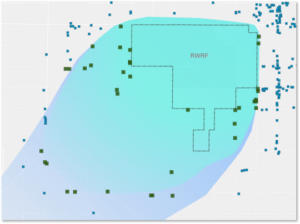
Nitrates in Drinking Water
Levels of nitrate above the Drinking Water Maximum Contaminant Level (MCL) in drinking water are a known health risk, especially to infants and pregnant women. Drinking water with an unsafe level of nitrate may cause methemoglobinemia, which decreases blood cells’ ability to carry oxygen through the body. The US Environmental Protection Agency established the MCL of 10 milligrams per liter of nitrate in water. Drinking water supplies that have levels of nitrate above this limit are unsafe to drink. Public water system operators – like the City of Fresno – regularly monitor for nitrates and other contaminants and treat the water if needed. However, property owners with their own domestic wells often do not know if their domestic well has high nitrate levels.
Where Does Nitrate Come From?
Nitrate exists naturally in soils, but increased levels of nitrate can enter groundwater supplies through a variety of sources, including:
- Run-off carrying chemicals found in most fertilizers
- Water discharged from industrial facilities
- Run-off from agricultural and farming operations
- Discharge from wastewater treatment facilities
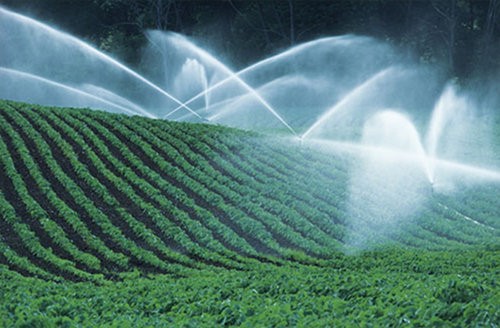
How Do I Know if Nitrate Levels in My Drinking Water are Above the MCL?
The only way to determine if there are unsafe levels is to test the well water. Public water system operators regularly monitor for nitrates and other contaminants and treat the water if needed. Property owners with their own domestic wells often do not know if their domestic well has high nitrate levels.
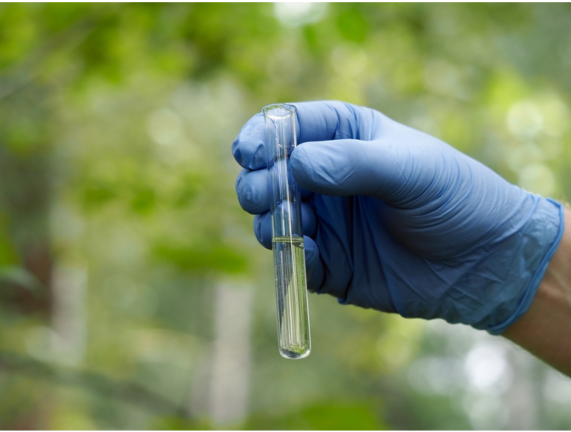
Area of Nitrate Contribution
As part of the Nitrate Initial Assessment, the City of Fresno is analyzing water quality data collected from City groundwater monitoring wells along with private and agricultural wells near the Fresno-Clovis Regional Wastewater Reclamation Facility (RWRF) and its percolation ponds at the facility to identify a potential “Area of Nitrate Contribution.” Based on that analysis, approximately 25 private drinking water wells have been identified in that area. Whether or not the RWRF is negatively impacting wells within that area is still in question so the next step is to work closely with private property owners to conduct nitrate testing.

Early Action Plan
The City of Fresno Nitrate Initial Assessment and input from community member participation will inform an Early Action Plan that describes near- and long-term solutions to provide residents with safe drinking water if nitrate levels are detected above the regulatory limit of 10 milligrams per liter and are shown to be influenced by the City wastewater treatment facility.
The Early Action Plan will be submitted to the Central Valley Regional Water Quality Control Board for review and approval in May 2021. Property owner input before that date will be a key part of the proposals included in that plan. The City of Fresno will work closely with property owners before and after this date to determine if elevated nitrate levels are present and to take action if needed. The City is responsible for and committed to providing and implementing a reasonable solution to provide clean drinking water is found to be the contributing source.
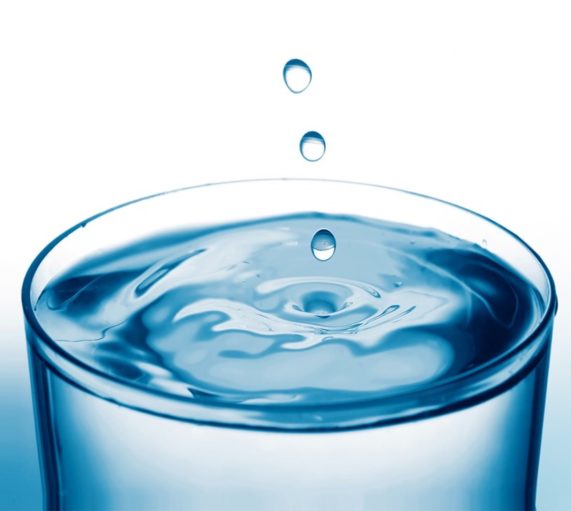
How to Participate
Participation by residents and property owners in the Fresno-Clovis Regional Wastewater Reclamation Facility’s (RWRF) Area of Nitrate Contribution is critical to answering the question about nitrate levels in the proximity of the treatment facility and for developing solutions if levels above the Drinking Water Maximum Contaminant Level (MCL) for nitrate are found and if they are shown to be impacted by the RWRF.
The City hosted two online meetings to discuss the program, options to test for nitrates in their private groundwater wells, and possible short-term solutions if nitrate levels are detected above the MCL. Below is a recording of the meeting:
English Meeting Recording and Presentation
Spanish Meeting Recording and Presentation
Hmong Meeting Presentation
